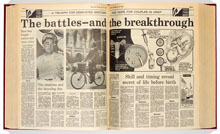Researching Reproduction
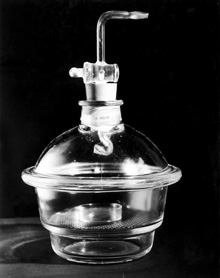
Communication between the (medically untrained) Cambridge scientist Robert Edwards and the Oldham clinician Patrick Steptoe was crucial. This is the chamber within which human embryos were incubated in both Oldham and Cambridge in the 1960s and ‘70s. Courtesy of Bourn Hall Clinic, Cambridge
Reproductive physiology was established at the intersection of medicine, agriculture, academic biology and public health. Scientists accord publication in journals the highest status, so it is easy to forget the rich variety of forms of communication used in research. Take the Nobel Prize-winning work of Robert Edwards and Patrick Steptoe to produce the first baby following in vitro fertilization. Historians can reconstruct the laboratories where handbooks, regulations and conversations, as well as journal articles, fed into daily notebook records. We can imagine the offices where manuscripts were drafted while further experiments were still being recorded, follow the conferences, comment pieces and newspaper splashes, and then see how manuals and training courses enabled others to replicate the work. Journal articles are crucial nodes in this system, but everything need not begin and end with them: newspapers announced the breakthrough before the scientific paper was even written.
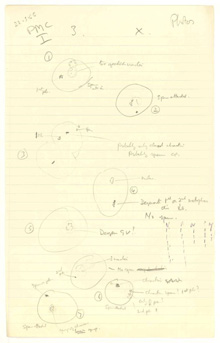
The sketches by Robert Edward show pig oocytes (egg mother cells from which mature ova arise) that had been matured in vitro, transferred to a pig oviduct (fallopian tube), inseminated with spermatozoa, and later recovered and examined for evidence of fertilization. Robert Edwards Papers, Churchill Archives Centre, EDWS Acc 1601 Box 3
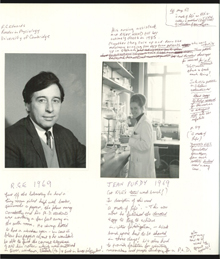
This page from a photograph album kept by Barbara Rankin, secretary to the physiologist Robert Edwards, includes images of Edwards and his assistant Jean Purdy with what are probably Rankin’s notes. Churchill Archives Centre, BARA 1
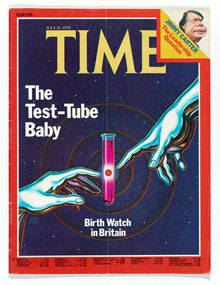
Roger Huyssen (b. 1946): Illustration for ‘The First Test-Tube Baby’ Time (Atlantic edition), volume 112, no. 5 (Private collection)
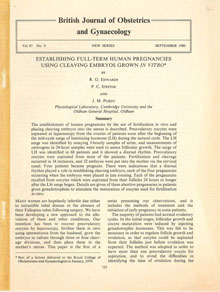
Robert Edwards (b. 1925), Patrick Steptoe (1913–1988) and Jean Purdy (1945–1985) ‘Establishing full-term human pregnancies using cleaving embryos grown in vitro’: offprint from the British Journal of Obstetrics and Gynaecology, volume 87, no.9, 737–756, September 1980 (Churchill Archives Centre, EDWS Acc 1643 Box 9)



